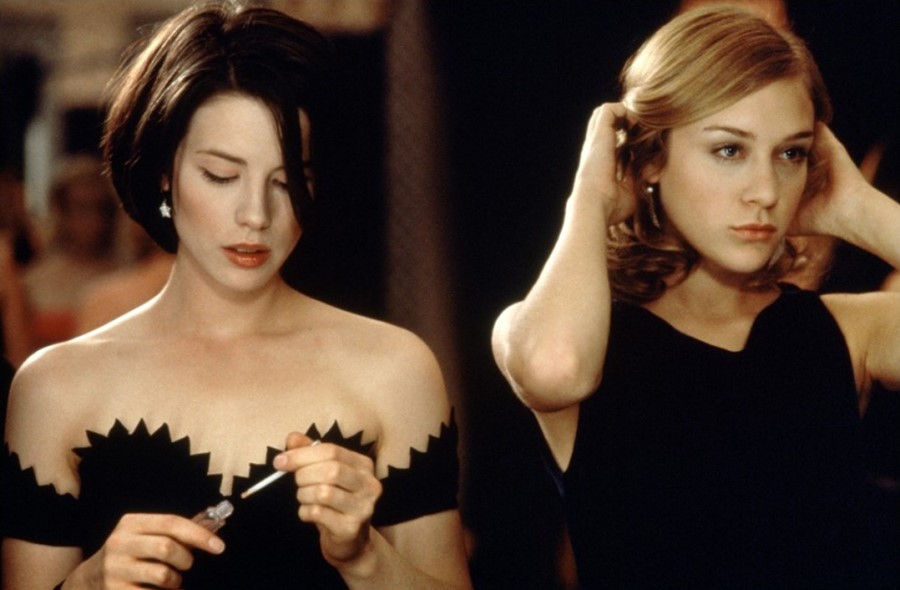As cult director Whit Stillman's new film Love & Friendship hits cinema screens, we look back on the 1998 classic that first educated us on dancefloor etiquette and the cultural significance of the halter-top
Released in 1998 and set “sometime in the early 1980s,” The Last Days of Disco was director Whit Stillman’s third film – following Manhattan and Barcelona – and the conclusion of the director’s self-proclaimed “Doomed-Bourgeois-in Love” series. A trilogy of films concerned with the lives of those on the verge of adulthood, laden with irony and hyperbole.
The Last Days of Disco is told from the point of view of Alice, played by the inimitable Chloë Sevigny, a graduate from a prestigious college working as a reader for a publishing house. She and colleague Charlotte, played by Kate Beckinsale, navigate the complicated alleyways of female friendship and the social pecking orders of New York’s ailing disco scene alongside their affected, aspiring WASP love interests. Set in a club that may-or-may-not represent Studio 54, Stillman frames the broader context of this comedy of manners with a smokescreen of striving for admission, extended periods of dancing, and drawn-out conversations on style and social opportunity, creating, in the process, a 1990s cult classic of epic proportions.
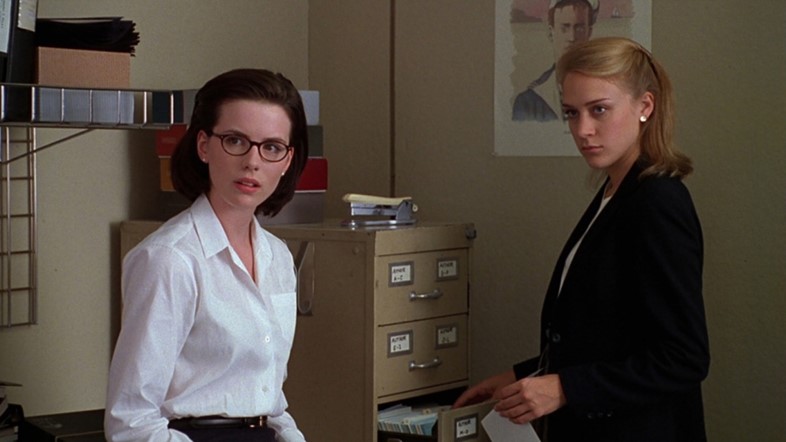
1. Your clothes expose your true self
“It’s so important to be in control of your own destiny," Charlotte says upon arrival at the club one night. "Thank God this is a whole new era in music and social models. We’re in complete control. Look down, there are a lot of choices out there."
The true nightlife of the era, the final days of disco that frame the last of the crossover years between adolescence and adulthood, set the scene for the politics-lite of the ‘aesthetic reactionaries’. Alice and Charlotte’s sartorial choices, in all their strapless, one-shoulder and scoop-neck shimmering glory, reflect this brilliantly – swapping clothes and employing polyester polygamy with the same focus as that required in their daytime plight for bestsellers. As much as everything in their lives seems a tentative go at playing adult, their exposed shoulders mask the awkward reality of working themselves out, in between platitudes and vodka tonics.
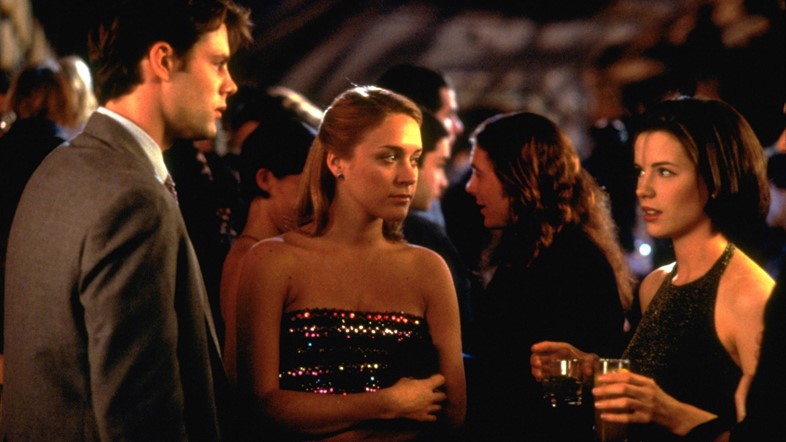
2. Accept advice from friends with a generous pinch of salt
Charlotte is liberal with her dating advice, and after the duo bump into two eligible Harvard graduates – an ad man and an environmental lawyer whom Alice had met previously at Sag Harbor on Long Island – she presents Alice with a gem to aid her in her seduction technique. “Whenever you can, throw the word ‘sexy’ into your conversation,” she offers. “‘There’s something really sexy about strobe lights’, or, ‘this fabric is so sexy’.”
It's not until later, having taken the environmental lawyer home, that Alice employs Charlotte’s advice, commenting on his comic collection. “There’s something really sexy about Scrooge McDuck” she says of one of the key protagonists in the illustrated stories, swaying with abandon to Andrea True’s More, More, More and drinking Pernod. “Looove Uncle Scrooge!” They then proceed to dance, awkwardly but somewhat skillfully, to the lawyer’s bedroom.
On their next meeting, Alice receives a sanctimonious lecture from him on her behaviour. “Why is it that when people have sex with strangers on their mind, their IQ just drops like 40 points?” he says. “All that affected, sexy seductress slinking around, Uncle Scrooge is sexy? Do you think I’m an idiot?” Later on, his moral high-ground collapses as it emerges that he has given her two STIs, but still, Alice's experience is evidence, if ever it was needed, that you should accept friends' advice with cynicism.
3. Choose your romantic role models selectively
Disney crops up often in the film, whether in reference to how Bambi's popularity justifies shifts in opinion on environmental practice, or in debates over how Lady and the Tramp serves as a tacky, depressing primer to love and marriage. Alice and Charlotte's friend Josh, an assistant district attorney, weighs in enthusiastically on the subject.
“It’s not really about dogs, except for some superficial bow-wow stuff at the start,” he offers, cynically. “The dogs all represent human types, which is where it gets into real trouble. Lady, the ostensible protagonist, is a fluffy, blonde Cocker Spaniel with absolutely nothing on her brain. She’s great looking but, let’s be honest, incredibly insipid. Tramp, the love interest, is a smarmy bragger of the most obnoxious kind, an oily jailbird out for a piece of tail or whatever he can get... Films like this programme women to adore jerks.” The moral of his monologue? Keep your wits about you when admiring fictional relationships, especially where anthropomorphized animals are concerned.
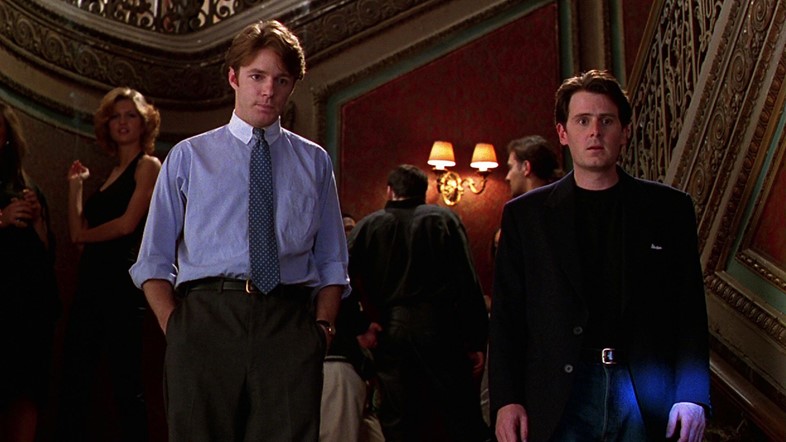
4. Identify your socio-cultural category, and watch out for yuppie-ism
In stark contrast to Alice and Charlotte’s sparkling, scanty eveningwear, it's during daylight hours (and all-hours, in fact, for the boys) that the group’s preppy, Ivy League roots really come into their own. The male characters spend much of the film wearing suits that they seem yet to grow into, and these costumes serve as revealing reflections of the joyless insurance broker-ambitions placed upon them by their parents. For their part, Alice and Charlotte clip their hair back in side partings and exude young professionalism, devising sartorial odes to their Ralph Lauren ambitions in tones of white, beige and muted blues, and through boxy, older-than-their-years blazers. The contrast illustrates the gap between where the respective groups are, and where they think they want to be.
It's not until later in the film, when an onlooker derides them with a cry of "yuppie scum!" that the group starts to question their own socio-cultural standing. Do yuppies even exist, they wonder? “No one says ‘I am a yuppie’,” club manager Des argues. “Of course yuppies exist,” Departmental Dan, an employee at Alice and Charlotte’s publishing firm, retorts. “Most people would say you are a prime suspect.”
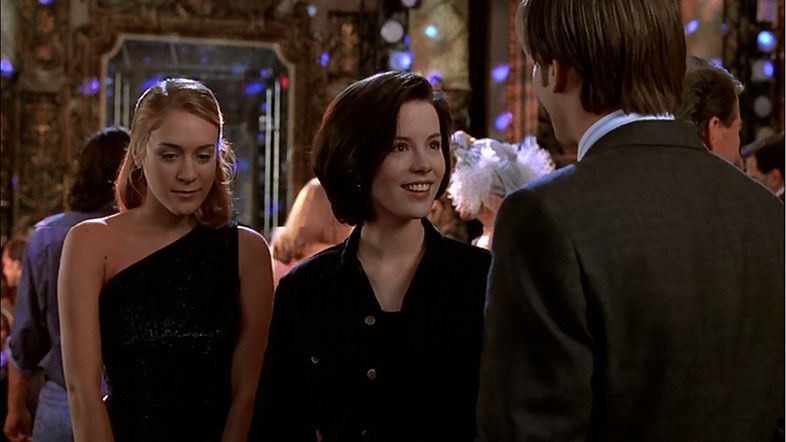
5. Disco will never die
The disco scene is plagued by detractors, the broader context of its popularity seemingly in step with the gentrification of New York – its fall came as the economy crashed and the jobs market collapsed. On picking up their unemployment cheques, the group – bar Alice, who has been promoted to assistant editor at the publishers – lament the passing of the scene. “God that’s sad, we’ve lived through a period that’s ended, it’s like dying a little bit," Des says. But Josh, pumped up for a later meeting, enthuses: “Disco will never be over. It will always live in our minds and hearts. Something like this, that was this big, and this important, and this great, will never die.” Disco was as vivid and seemingly vital as any moment that is about to give way to something new.
